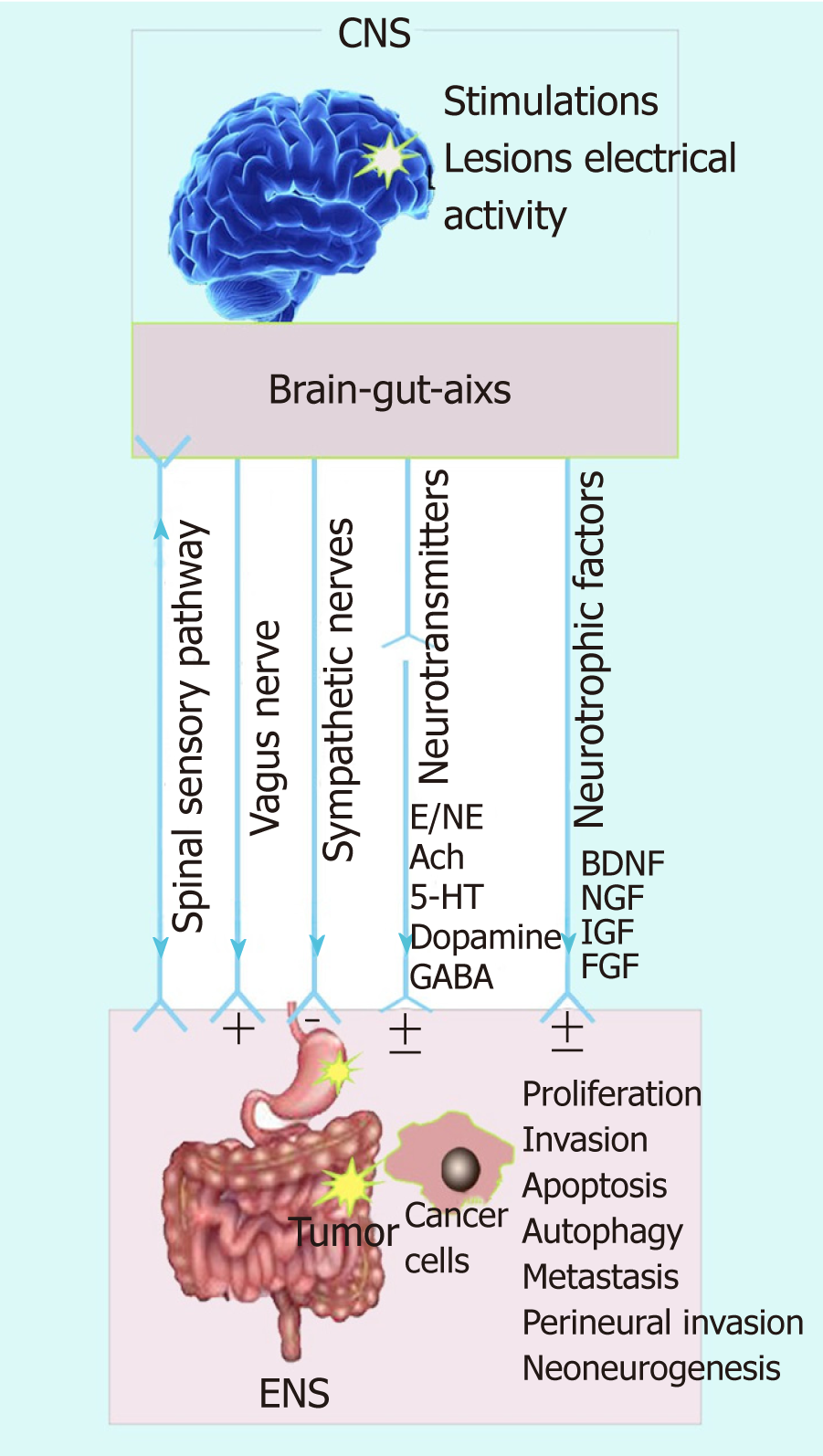Copyright
©The Author(s) 2019.
World J Clin Cases. Jul 6, 2019; 7(13): 1554-1570
Published online Jul 6, 2019. doi: 10.12998/wjcc.v7.i13.1554
Published online Jul 6, 2019. doi: 10.12998/wjcc.v7.i13.1554
Figure 1 Representation of the interaction between the nervous system and gastrointestinal cancer (the brain-gut axis).
The regulatory signals related to tumor cell growth, invasion, apoptosis, autophagy, and metastasis may be transmitted by the vagal nerves, sympathetic nerves, spinal afferent pathways (anatomical routes), or the neuroendocrine pathway. The stimulation and inactivation of the central nervous system and the sympathetic and parasympathetic nervous systems, or changes in innervation of the gastrointestinal (GI) tract might contribute to a higher incidence of GI cancer. In addition, neuro-transmitters and neurotrophic factors can produce either a stimulatory or inhibitory effect on the progression of GI cancer. CNS: Central nervous system; Ach: Acetylcholine; 5-HT: 5-hydroxytryptamine; GABA: Gamma-aminobutyric acid; BDNF: Brain-derived nerve growth factor; NGF: Nerve growth factor; IGF: Insulin-like growth factor; FGF: Fibroblast growth factor.
- Citation: Di YZ, Han BS, Di JM, Liu WY, Tang Q. Role of the brain-gut axis in gastrointestinal cancer. World J Clin Cases 2019; 7(13): 1554-1570
- URL: https://www.wjgnet.com/2307-8960/full/v7/i13/1554.htm
- DOI: https://dx.doi.org/10.12998/wjcc.v7.i13.1554









